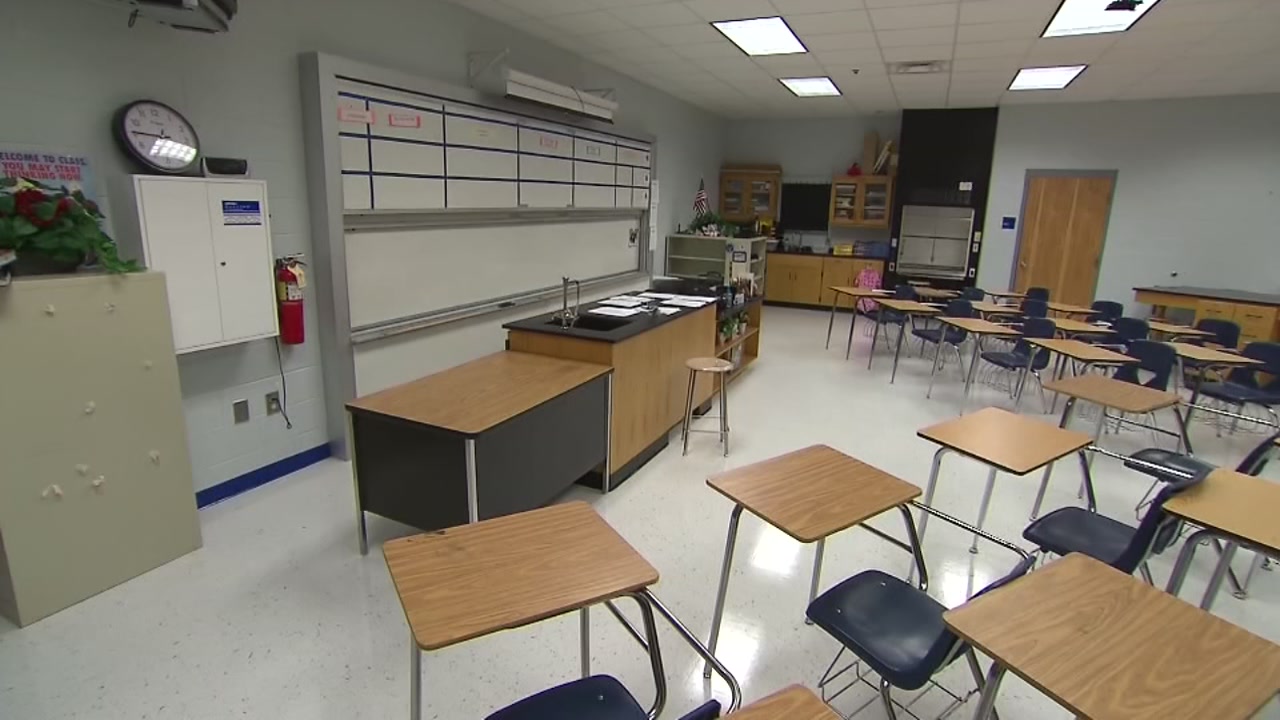The CDC introduced a phased approach that's broken down into four color-coded zones that base reopening on the county's level of community transmission.
RELATED: California school reopening map shows private schools opening in-person where public schools aren't
"Enabling schools to open and remain open is a shared responsibility," said CDC Director Dr. Rochelle Walensky.
[Ads /]
In order for that to happen, Walensky stressed five key mitigation strategies need to be followed.
- Correct use of masks (priority)
- 6 feet of social distancing (priority)
- Hand washing
- Clean facilities
- Use of diagnostic contact tracing
RELATED: CDC: Strong evidence in-person schooling can be done safely amid COVID pandemic
"I want to underscore that the safest way to open schools is to ensure there is as little disease as possible in the community," Walensky said.
[Ads /]
The CDC is recommending counties track the rate of transmission following these four color coded reopening zones. The zones indicate whether schools can offer in-person instruction based on a county's number of new cases per 100,000 people.
Blue and yellow translate to lower/moderate transmission, whereas orange and red translate to substantial/high transmission resulting in virtual-only instruction for middle and high schools.
"That was a big disappointment," said ER Dr. Jean Noble, who leads UCSF's COVID Emergency Response.
RELATED: Elementary school students return to class in Danville amid ongoing COVID-19 pandemic
Noble says the CDC should have delinked community prevalence from dictating school reopening.
[Ads /]
"Our latest studies really show that schools can be operated safely regardless of the amount of COVID circulating in the community," Noble said. "The other big disappointment is there's no mandate here."
Noble spent months researching COVID transmission in schools - including two major studies in North Carolina and Wisconsin. Without a mandate, she's concerned schools won't make the change to in-person instruction.
"Kids were back in school when positivity rates were up to 40 percent and there were still only seven school-based transmissions over a three-month period," said Noble. "We can enforce universal masking and be safe."
RELATED: SF mayor, teachers union spar over school reopening plan and COVID-19 vaccinations
The CDC encourages vaccinating and weekly testing for teachers and staff, but doesn't deem either essential to reopen.
Meanwhile, as concerns escalate over evolving COVID variants, Wolensky says it's possible guidance could change if transmission moves past the red zone.
"If we get there, we may need to revisit this again," she added.
RELATED STORIES & VIDEOS:
- How to register for COVID-19 vaccine in every Bay Area county
- Map: CA counties that can, can't reopen under new rules
- CALCULATOR: Find out how many people may get a COVID-19 vaccine before you
- VIDEO: When will I get the COVID-19 vaccine? We explain who goes 1st
- Updated number of COVID-19 deaths, cases in Bay Area
- Map shows everywhere you can get a COVID-19 test in the Bay Area
- How are Chinatown businesses surviving? Here's what we found
- From COVID-19 to Black Lives Matter, these 13 people defined the Bay Area in 2020
- COVID-19 Diaries: Personal stories of Bay Area residents during pandemic
- California EDD: The most commonly asked questions we get about unemployment and PUA
- How to tell the difference between seasonal allergies and coronavirus symptoms
- Here's which mask is better to protect from COVID-19
- First COVID-19 vaccine volunteers in US describe experience as Bay Area launches vaccine trials
- Coronavirus origin: Where did COVID-19 come from?
- What is a COVID-19 genetic, antigen and antibody test?
- What will it take to get a COVID-19 vaccine and how will it be made?
- What does COVID-19 do to your body and why does it spread so easily?
- Here's how shelter in place, stay at home orders can slow spread of COVID-19
- Coronavirus Timeline: Tracking major moments of COVID-19 pandemic in San Francisco Bay Area
- Coronavirus Doctor's Note: Dr. Alok Patel gives his insight into COVID-19 pandemic

